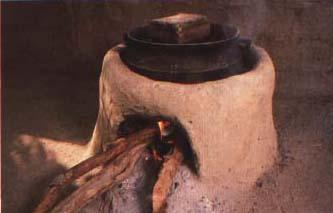
|
Hot-water treatment
Hot-water treatment of seeds is used against the following diseases (clicking on underlined diseases takes you to diseases' page):
Anthracnose; bacterial blight; bacterial leaf streak; bacterial spot; black rot; black leg; black scurf; black spot; common blight; powdery scab; ring spot; early blight ; septoria spot;Phytophtora (pineapple)
Hot-water treatment of seeds can be used for the following crops:
Spinach; brussels sprouts; cabbage; pepper; tomato; eggplant; broccoli; cauliflower; carrot; collard; kale; kohlrabi; turnip; mustard; cress; radish; lettuce; celery; celeriac; banana; mango; pineapple; potato
Hot-water treatment can be used against the following pests:
Fruit flies (on mango fruits) / Banana weevil (on banana suckers) / Mealybugs (cassava and pineapple) / Nematodes (banana suckers and pineapples)
|
Hot-water treatment for seeds
For potato tubers heat treatment of 10 min in water at 55°C was used. The same treatment of naturally or artificially contaminated seed tubers gave complete absence of blackleg infection in the field and decreased the amounts of powdery scab (Spongospora subterranea) and black scurf (Rhizoctonia solani) on progeny tubers.
Procedure:
1. In a large pot put plenty of water, heat the water to the required temperature.2. Place seeds in loose cotton bag and submerge it in water. Follow strictly the recommended temperature and the time required. It is important that the water is maintained at a uniform temperature throughout the container. Constantly stir the water while soaking the bag. Suspend the bag and do not let it touch the bottom of the pot.
3. Remove the bag and cool it in clean cold water to stop the heating.
4. Spread the seeds on a clean dry paper to cool and dry.
5. Preferably do not store treated seeds. Sow them immediately on well-prepared seedbeds.
Storing seeds:
If treated seeds cannot be sown immediately, a good way to store the seeds is as follows:- Dry the seeds in the indirect sun until they are completely dry.
- Take a clean jar, pot or bottle of clear non-coloured glass and place a clean piece of cloth with warm ashes in the bottom. You should be able to touch the ashes without burning yourself. Close the container well and let the ashes cool. By adding ashes, any water that gets in the container will be absorbed by the ashes and will prevent the seeds from moulding and rotting
- After an hour or so, the ashes should be cool and you can then place the seeds, loose or wrapped in a transparent plastic bag, in the container. Close the container with a piece of plastic (in case of a bottle with a cork). Spread about 2 mm layer of grease or vaseline over the plastic or cork so that the edges are covered to prevent moisture getting into the container.
- Store the container in a cool, dry place.
- Check regularly if mould has formed on the seeds. If the seeds were dried well, the chance that mould would develop is very small. However, should you see mould, dry the seed again.
Heat treatment recommendations:
Potato tuber: 55°C for 10 min
Spinach, brussels sprouts, cabbage, pepper, tomato, eggplant: 50°C: 30 minutes
Broccoli, cauliflower, carrot, collard, kale, kohlrabi, turnip: 50°C: 20 minutes
Mustard, cress, radish: 50°C: 15 minutes
Lettuce, celery, celeriac: 47°C: 30 minutes
(Nega et al. 2003)
Hot-water treatment for mango fruit
Hot water treatment (HWT) is also recommended for mango fruits as an effective post harvest treatment to minimise fruit fly damage and anthracnose.
For large commercial enterprises it is possible to immerse mango fruits in a water bath with constant temperature of 48°C for 45-60 minutes. According to Joshi et al. (1995) this gives 100 % control of fruit fly eggs. Temperature control is very important as fruit can be damaged by hot temperatures.
For smaller operations, immersing mango fruits in water bath of 50°C for 5 minutes is recommended.
Caution: Do not use this method without a good thermometer to measure the temperature, as fruits can be damaged by too hot temperatures.
Hot-water treatment for banana suckers
Hot-water treatment of suckers helps against banana weevil. Recommendations suggest immersing clean trimmed suckers in a bath with hot water at 52-55°C for 15-27 minutes before planting. There have been reports of hot water treatment killing remaining eggs and a high percentage of grubs. For example, Gettman et al. (1992) reported over 99% mortality of weevil eggs and grubs when suckers of dessert bananas were placed in a water bath of 43°C for 3 h. However, other sources indicate that hot baths are very effective in eliminating nematodes, but kill only a third of the weevil grubs. Thus, clean planting material is likely to provide protection against weevil for several crop cycles (Gold and Messiaen, 2000).
Hot-water treatment for pineapple plantlets for transplanting
Hot water treatment (50°C for 30 min to 2 hours) of planting material is efficient and can control both mealybugs, Phytophthora and nematodes on pineapple plantlets. After this treatment it is important to drip dry the planting material to avoid fungus attack and deterioration.
How can the temperature be controlled?
A simple method for farmers to control temperature has been developed in Kenya. It consists of a pith block (of about 3 cm x 3 cm) or a small piece of wood tied to an iron plate (3 x 3 cm and weighing about 10 g) covered with a thin film of candle wax. This device is allowed to sink in a half-empty oil drum with water, in which the banana material to be treated is placed. Wood is burnt underneath the drum, when the temperature rises to 55°C the wax melts releasing the pith or piece of wood, which then floats to the surface. At this moment the firewood is removed. (Prasad and Seshu Reddy, 1994).
Information Source Links
- Mackay, J. M., Shipton, P. J. (1983). Heat treatment of seed tubers for control of potato blackleg (Erwinia carotovora subsp. atroseptica) and other diseases. Plant Pathology 32, 385-393. Published online under http://onlinelibrary.wiley.com
- Nega, E., Ulrich, R., Werner, S. und Jahn, M. (2003). Hot water treatment of vegetable seed - an alternative seed treatment method to control seed borne pathogens in organic farming. Journal of Plant Diseases and Protection 110(3): 220-234. www.orgprints.org
- Prasad, J.S., Seshu Reddy, K. V. (1994). Hot water treatment for banana planting material made easier. In: Infomusa, Vol. 3 (2), 16.

 Back
Back
